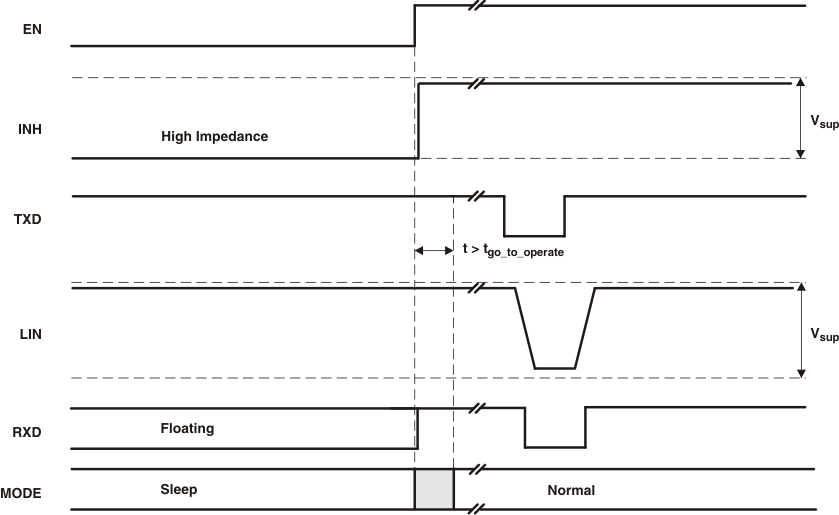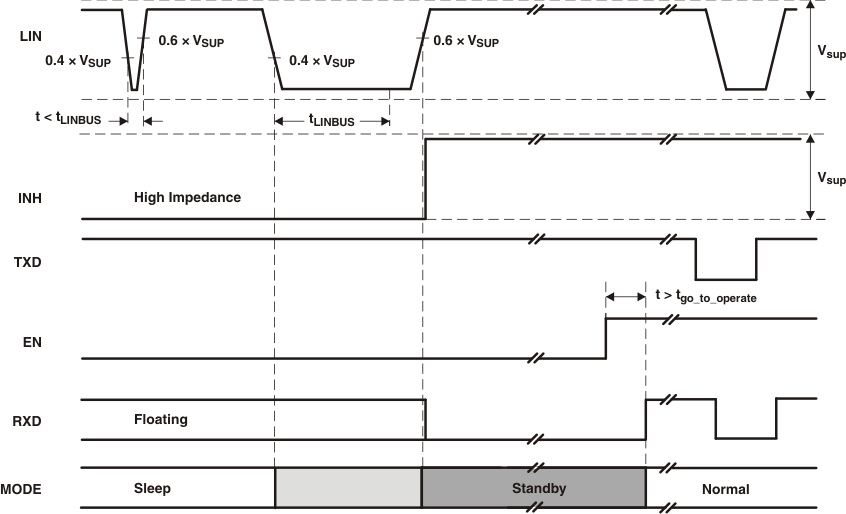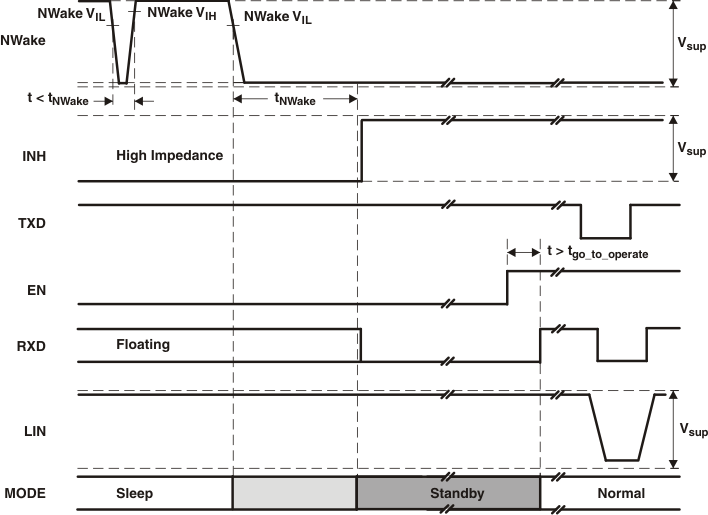SLIS117C August 2007 – May 2022 TPIC1021A-Q1
PRODUCTION DATA
- 1 Features
- 2 Applications
- 3 Description
- 4 Revision History
- 5 Description (continued)
- 6 Device Comparison Table
- 7 Pin Configuration and Functions
- 8 Specifications
- 9 Parameter Measurement Information
-
10Detailed Description
- 10.1 Overview
- 10.2 Functional Block Diagram
- 10.3 Feature Description
- 10.4 Device Functional Modes
- 11Application and Implementation
- 12Device and Documentation Support
- 13Mechanical, Packaging, and Orderable Information
Package Options
Mechanical Data (Package|Pins)
- D|8
Thermal pad, mechanical data (Package|Pins)
Orderable Information
10.4.1.3 Standby Mode
This mode is entered whenever a wake-up event occurs through LIN bus or NWake while the TPIC1021A is in sleep mode. The LIN bus responder termination circuit and INH are turned on when standby mode is entered. The application system powers up once INH is turned on, assuming the system is using a voltage regulator connected through INH. Standby mode is signaled through a low level on RXD.
When EN is set high while the TPIC1021A is in standby mode the device returns to normal mode and the normal transmission paths from TXD to LIN bus and LIN bus to RXD are enabled.
 Figure 10-2 Wakeup Through EN
Figure 10-2 Wakeup Through EN Figure 10-3 Wakeup Through LIN
Figure 10-3 Wakeup Through LIN Figure 10-4 Wakeup Through NWake
Figure 10-4 Wakeup Through NWake